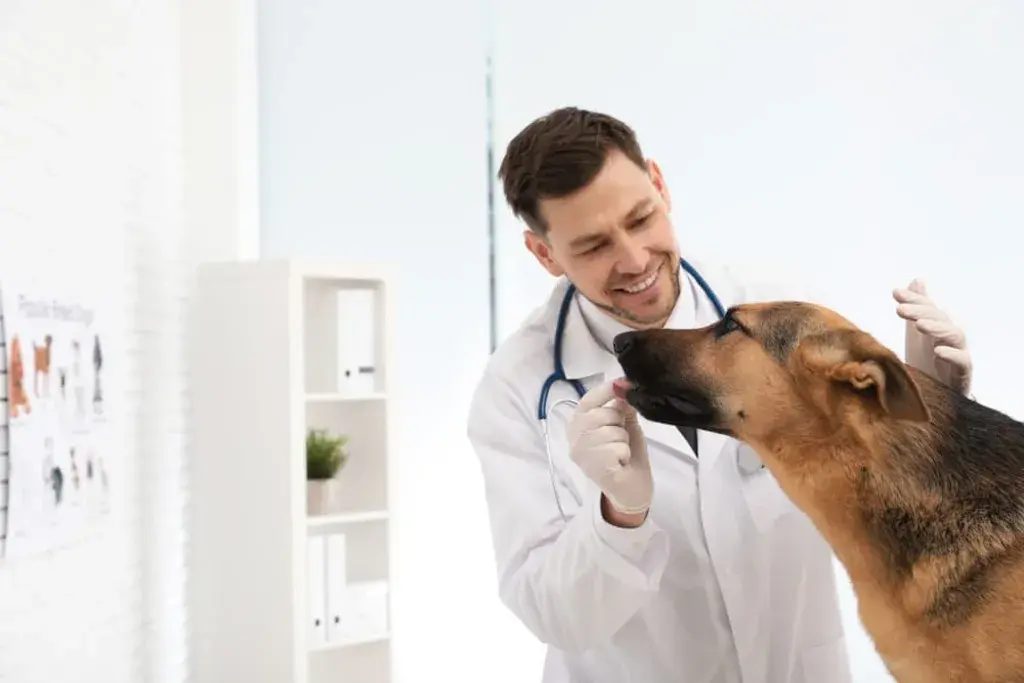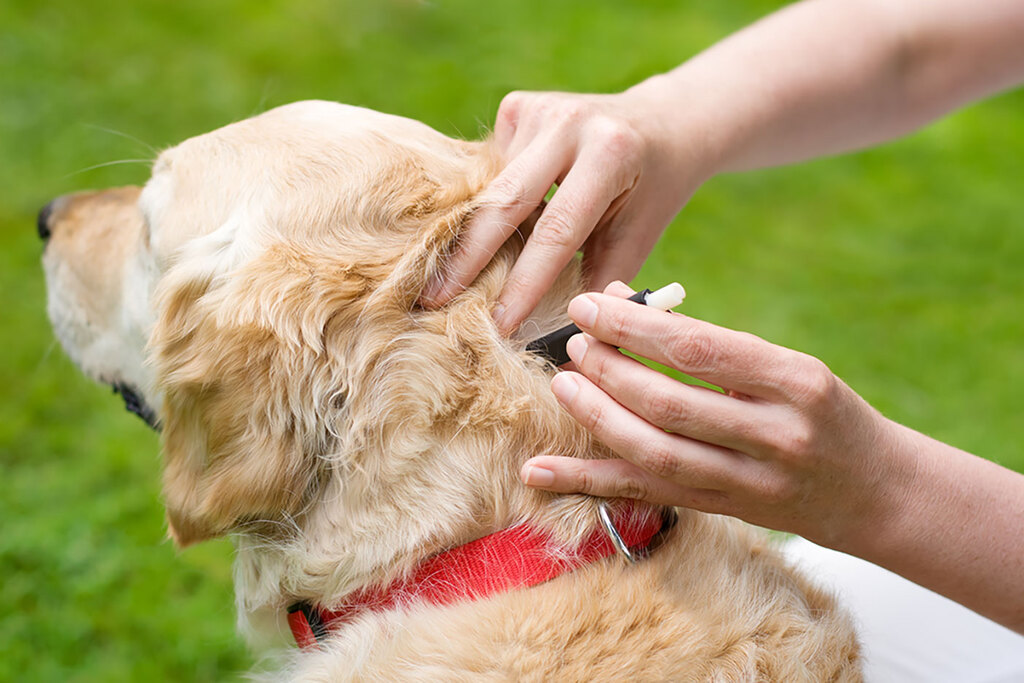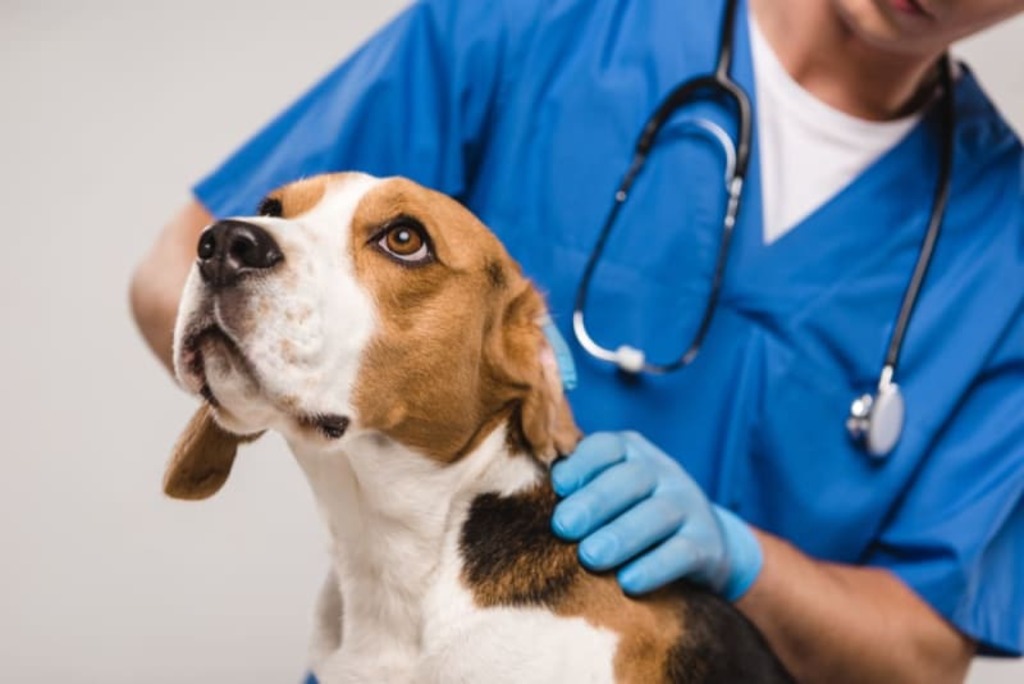
As pet owners, we all want to keep our furry friends healthy and happy. However, diseases like Ehrlichiosis can pose significant health risks to our dogs. Ehrlichiosis is a serious tick-borne illness caused by the bacterium Ehrlichia and it can affect dogs in various ways. In this comprehensive guide, we’ll explore what Ehrlichiosis is, how it affects dogs, the symptoms to watch for, available treatments, survival rates, and prevention strategies. Our goal is to equip you with the knowledge needed to protect your pet and ensure their well-being.
1. Understanding Ehrlichiosis in Dogs
What is Ehrlichiosis?
Ehrlichiosis is a tick-borne disease primarily caused by the bacterium Ehrlichia This pathogen is transmitted to dogs through the bite of an infected tick, typically the brown dog tick ( Rhipicephalus sanguineus). The bacterium infects white blood cells, leading to a range of clinical symptoms and potential health issues. Ehrlichiosis can manifest in different forms, depending on the strain of Ehrlichia involved and the stage of the disease.
Transmission
Ehrlichiosis is not spread through direct contact between dogs or from dogs to humans. Instead, it is transmitted through ticks that carry the Ehrlichia bacterium. Ticks acquire the bacteria by feeding on infected hosts, and when these ticks bite another dog, they transmit the pathogen. This makes tick control a crucial component of preventing Ehrlichiosis.
Forms of the Disease
There are several forms of Ehrlichiosis, including:
Canine Monocytic Ehrlichiosis (CME): Caused by Ehrlichia canis , this is the most common form in dogs.
Canine Granulocytic Ehrlichiosis (CGE): Caused by Ehrlichia ewingii, this form is less common but can still pose serious health risks.
Canine Ehrlichiosis due to Ehrlichia risticii: This form is less well-known but can affect dogs.
Each form has its own set of symptoms and treatment protocols, but they all require prompt attention to ensure the best outcome for your dog.
2. Recognizing the Symptoms of Ehrlichiosis in Dogs

Initial Symptoms
The early symptoms of Ehrlichiosis can be quite vague and may overlap with other illnesses. Common initial symptoms include:
Fever: Dogs may exhibit a high body temperature, which can make them feel lethargic.
Lethargy: Affected dogs often become unusually tired and may lack energy.
Loss of Appetite: Your dog may show a decreased interest in food, which can lead to weight loss.
These symptoms can be subtle and may be mistaken for other common illnesses, making it essential to be vigilant if your dog has been exposed to ticks.
Progressive Symptoms
If left untreated, Ehrlichiosis can progress to more severe symptoms, including:
Weight Loss: Chronic illness can lead to a noticeable decrease in body weight.
Joint Pain: Your dog might show signs of discomfort or stiffness in their joints.
Swollen Lymph Nodes: Lymph nodes may become enlarged, indicating an ongoing infection.
These progressive symptoms are more pronounced and require immediate veterinary evaluation to prevent further complications.
Severe Symptoms
In advanced cases, Ehrlichiosis can lead to severe health issues, such as:
Bleeding Disorders: Dogs may experience nosebleeds, gum bleeding, or other signs of clotting problems.
Difficulty Breathing: Severe infections can affect respiratory function.
Neurological Signs: In rare cases, the disease can impact the nervous system, leading to symptoms like seizures or uncoordinated movements.
These severe symptoms indicate a critical stage of the disease and necessitate urgent medical intervention.
3. Diagnosing Ehrlichiosis in Dogs
Diagnostic Procedures
Diagnosing Ehrlichiosis involves a combination of clinical evaluation and laboratory tests. Your veterinarian will typically perform:
Blood Tests: To detect the presence of Ehrlichia bacteria or antibodies. Common tests include the Ehrlichia PCR (Polymerase Chain Reaction) test and serological tests that identify specific antibodies.
Complete Blood Count (CBC):To assess changes in white blood cell counts, which can indicate an infection.
Blood Smears: Microscopic examination of blood samples can help identify infected cells.
Early diagnosis is crucial, as it allows for prompt treatment and reduces the risk of severe complications.
Importance of Early Diagnosis
Early diagnosis of Ehrlichiosis enhances the chances of successful treatment and minimizes the risk of long-term health issues. If you notice any symptoms or if your dog has been exposed to ticks, seek veterinary care as soon as possible. The sooner the disease is identified, the more effective the treatment will be.
4. Treatment for Ehrlichiosis in Dogs

Medication
The primary treatment for Ehrlichiosis involves antibiotics. The most commonly used medication is doxycycline, which targets the Ehrlichia bacteria. Treatment typically lasts for several weeks, and it’s essential to follow your veterinarian’s instructions to ensure the infection is fully cleared.
Doxycycline: This antibiotic is effective in treating Ehrlichia infections and is usually well-tolerated by dogs.
Other Antibiotics: In some cases, alternative antibiotics may be used, depending on the strain and severity of the infection.
Treatment Duration
The duration of treatment depends on the severity of the infection and the response to medication. Most dogs require a treatment period of 3 to 4 weeks. It’s crucial to complete the entire course of antibiotics, even if your dog starts to feel better, to ensure that the bacteria are fully eradicated.
Supportive Care
In addition to antibiotics, supportive care may be necessary to help your dog recover. This can include:
Hydration: Ensuring your dog stays well-hydrated, especially if they have been experiencing vomiting or diarrhea.
Nutrition: Providing a balanced diet to support overall health and recovery.
Monitoring: Regular veterinary check-ups to monitor progress and adjust treatment if needed.
5. Survival Rate and Prognosis
Survival Rates
The survival rate for dogs with Ehrlichiosis largely depends on the stage of the disease at the time of diagnosis and the promptness of treatment. Dogs that receive early treatment generally have a good prognosis and can make a full recovery. However, survival rates can be lower in cases where the disease has progressed significantly or if there are complications.
Prognosis
The prognosis for Ehrlichiosis varies based on several factors:
Early Intervention: Dogs diagnosed and treated early typically have a positive prognosis.
Chronic Cases: In cases where the disease becomes chronic, ongoing management and treatment may be necessary.
Long-Term Effects: Some dogs may experience lingering effects, such as joint pain or blood abnormalities, even after treatment.
Regular follow-up with your veterinarian is important to monitor your dog’s recovery and address any long-term issues.
6. Is Ehrlichiosis Contagious to Humans?

Transmission to Humans
Ehrlichiosis is primarily a disease of dogs and is transmitted through tick bites. There is currently no evidence that Ehrlichia can be transmitted directly from dogs to humans. However, the ticks that carry Ehrlichia can also bite humans, potentially transmitting other tick-borne diseases.
Precautions
While Ehrlichiosis itself is not contagious to humans, it’s important for pet owners to take precautions to minimize the risk of tick-borne diseases:
Tick Prevention: Use tick preventatives on your dog to reduce the risk of tick bites.
Personal Protection: Use tick repellents and wear protective clothing when spending time in tick-infested areas.
Tick Checks: Regularly check both your dog and yourself for ticks after outdoor activities.
By taking these precautions, you can protect both your pets and your family from tick-borne illnesses.
7. Preventing Ehrlichiosis in Dogs
Tick Prevention
Preventing Ehrlichiosis starts with controlling ticks on your dog. There are several effective methods for tick prevention:
Topical Treatments: Monthly treatments that repel and kill ticks, such as those containing fipronil or imidacloprid.
Tick Collars: Collars that provide long-lasting protection against ticks.
Oral Medications: Prescription pills that prevent ticks from attaching and feeding.
Consult your veterinarian to determine the best tick prevention strategy for your dog based on their lifestyle and risk factors.
Regular Veterinary Care
Routine veterinary visits are essential for maintaining your dog’s health and preventing tick-borne diseases. During check-ups, your veterinarian can:
Perform Tick Checks: Examine your dog for ticks and recommend additional preventive measures if needed.
Conduct Testing: Regular blood tests can help detect early signs of tick-borne diseases, including Ehrlichiosis.
Environmental Measures
Reducing the tick population in your dog’s environment can further decrease the risk of Ehrlichiosis:
Yard Maintenance: Keep your yard well-maintained by trimming grass and removing leaf litter where ticks may thrive.
Tick-Free Zones: Create tick-free areas around your home by using landscaping techniques and tick control products.
By implementing these measures, you can create a safer environment for your dog and reduce the likelihood of tick exposure.
8. When to See the Vet: Signs You Shouldn’t Ignore

Immediate Actions
If you notice any of the following signs in your dog, seek veterinary care immediately
Persistent Fever: A high temperature that doesn’t resolve with time.
Unexplained Bleeding: Nosebleeds, bleeding gums, or other signs of bleeding disorders.
Severe Lethargy: Extreme tiredness or reluctance to move.
Early intervention is crucial for effective treatment and improving your dog’s chances of recovery.
The Role of Regular Check-Ups
Regular veterinary check-ups play a key role in detecting and preventing illnesses like Ehrlichiosis. Routine exams allow for early detection of health issues and provide an opportunity to discuss preventive measures with your vet.
Conclusion
Ehrlichiosis is a serious but manageable disease that affects dogs through tick bites. By understanding the symptoms, seeking timely treatment, and implementing preventive measures, you can significantly improve your dog’s chances of a full recovery and protect them from future infections.
Staying vigilant about tick prevention and regular veterinary care will go a long way in ensuring your dog remains healthy and happy. If you have any concerns about your dog’s health or want to learn more about Ehrlichiosis, don’t hesitate to reach out to your veterinarian.
In Case You Missed It!











